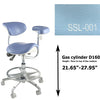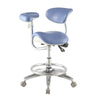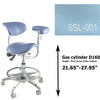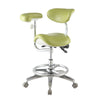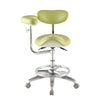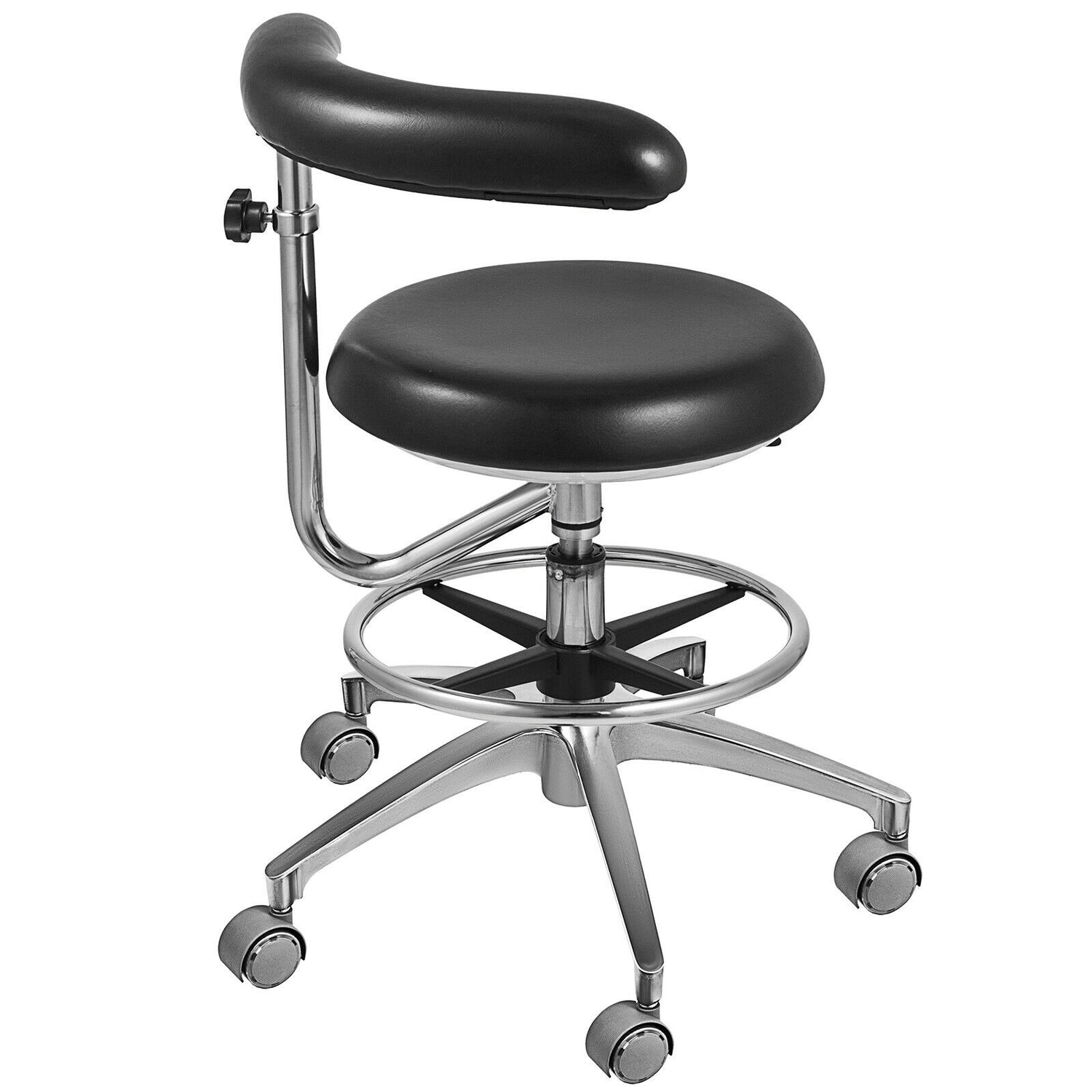Dental hygienists play a pivotal role in ensuring patients' oral health, and the comfort and well-being of these professionals are integral to the efficiency of dental practices. A significant, and often overlooked, factor in dental hygienists' comfort is their seating. Traditional office chairs are not designed for hygienists who spend long hours working in confined spaces and need to maintain precise posture for extended periods. This blog post will explore how dental saddle chairs can transform dental hygienists' working experience, increasing comfort, enhancing productivity, and reducing the risk of occupational strain.
Improving Dental Hygienist Workflow with Ergonomic Saddle Chairs
The ergonomic design of saddle chairs can significantly improve the workflow for dental hygienists by promoting a healthy seated posture. Unlike conventional chairs that often lead to slouching, saddle chairs encourage a more natural and upright position. This promotes active sitting, which helps hygienists avoid the muscular fatigue and discomfort associated with long hours of seated work.
Saddle chairs, like the ones offered by Lincharm, provide supportive seating that allows hygienists to be closer to their patients without sacrificing comfort. The smooth, 360-degree rotation and adjustable height of these chairs permit effortless movement, reducing strain when reaching for instruments or engaging with patients. Such enhanced mobility ensures that hygienists can work comfortably and efficiently, without the need for constant readjustment.
The Connection Between Saddle Chairs and Increased Dental Hygienist Satisfaction
Employee satisfaction is vital to any business, including dental practices. With hygienists often struggling with back and neck pain due to poor seating, addressing their comfort can boost morale and productivity. Saddle chairs offer a solution that directly impacts employee satisfaction.
By providing saddle chairs, dental practices show a commitment to the well-being of their staff. This investment can lead to a more positive work environment, with hygienists appreciating the consideration for their comfort. The result is often increased loyalty, lower turnover rates, and a more satisfied, productive workforce that can better focus on patient-care without the distraction of discomfort.
Evaluating the Best Saddle Chairs for Dental Hygienists’ Needs
Not all saddle chairs are created equal, and when choosing the best seating for dental hygienists, several factors should be considered. The materials used, weight capacity, adjustable features, and even the aesthetic design play a role in the comfort and practicality of the saddle chair.
Lincharm's line of saddle chairs provides options specifically tailored to the needs of dental hygienists. Their chairs are crafted from high-quality materials, offer weight capacities suitable for most users, and feature easily adjustable height and tilt controls. These chairs are not only ergonomic but also durable and reliable, ensuring a long-term solution for dental practices looking to invest in the well-being of their hygienists.

Saddle Chairs: A Key Tool for Preventing Occupational Strain in Dental Hygienists
Occupational strain within the dental profession is a well-documented concern, with back and neck pain being among the most prevalent issues. Saddle chairs are a preventative measure that can help hygienists avoid these strains. The dynamic seating position that saddle chairs encourage leads to stronger back muscles, better circulation, and less pressure on the spine—all factors that can mitigate the risk of chronic pain and injury.
The supportive design also ensures that hygienists are not overextending or contorting their bodies to reach instruments or patients, which can be a common cause of strain. By utilizing saddle chairs, dental practices can actively contribute to their staff's health and prevent long-term occupational injuries.
Customizing Saddle Chairs for the Unique Demands of Dental Hygiene Work
Customization is key when it comes to providing the optimal seating solution for dental hygienists. Given the individual nature of employee comfort, saddle chairs must offer adaptability to various body shapes and heights.
Lincharm's saddle chairs come with optional add-ons such as footrests, armrests, and specialized cushioning that can be tailored to the unique comfort preferences of dental hygienists. These customization options ensure that each hygienist can fine-tune their chair to best support them throughout the workday, making the investment in quality seating even more effective in promoting their well-being.
In conclusion, saddle chairs are not merely a piece of furniture but a critical tool in the arsenal of dental practices looking to support their employees and improve overall performance. By investing in ergonomic solutions, dental hygienists can experience increased comfort, reduced occupational strain, and improved satisfaction, leading to a more efficient and effective dental service for patients.
